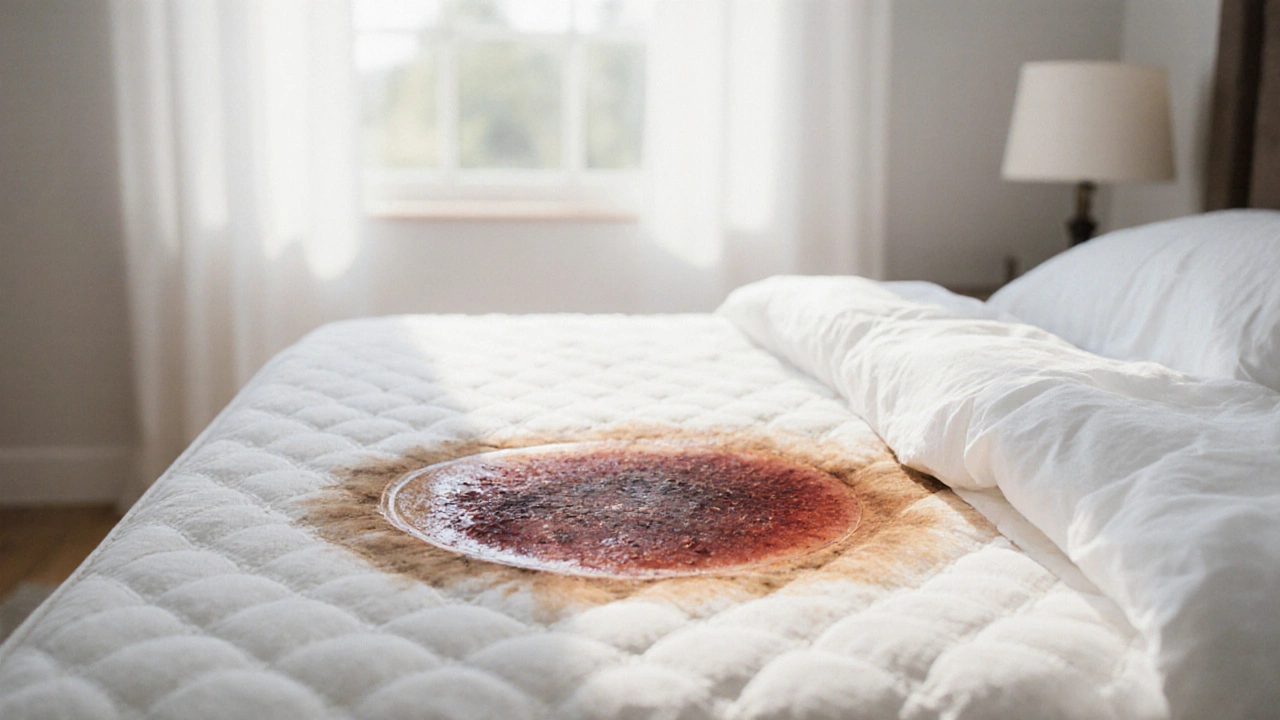Enzyme Cleaner: The Natural Power Behind Stain & Odor Removal
When working with enzyme cleaner, a biologically‑based cleaning solution that uses enzymes to break down stains, odors and organic buildup. Also known as enzymatic cleaner, it targets proteins, fats and carbohydrates, turning them into harmless water and carbon dioxide. If you’re hunting for a reliable enzyme cleaner that won’t damage fabrics or surfaces, you’ve landed in the right spot.
Enzyme cleaners work because they contain living proteins that act like tiny scissors. When you spray the solution on a mess, the enzymes locate the bond that holds the stain together – whether it’s a protein from spilled milk, a fat from greasy food, or a carbohydrate from wine. The enzymes then cleave those bonds, converting the stubborn residue into tiny, water‑soluble fragments. This process only happens under the right conditions: a moderate temperature (around 15‑30 °C), a neutral pH, and enough moisture for the enzymes to move. That’s why you’ll often see instructions to let the cleaner sit for 10‑15 minutes before wiping – the enzymes need time to work. The result is a clean surface without the harsh chemicals that can irritate skin or damage upholstery.
Why Choose Enzyme Cleaners?
One of the biggest pain points in home cleaning is urine odor, the pungent smell caused by urea breaking down into ammonia. Traditional cleaners mask the smell, but enzyme cleaners actually destroy the source. The enzymes break down urea and other nitrogen‑based compounds, stopping the chemical reaction that creates the foul smell. In practice, that means a mattress, carpet or pet bedding that once smelled like stale urine will soon smell neutral or fresh. Because the process is biological, there’s no lingering chemical residue, making it safe for children and pets.
When it comes to mattress cleaning, the goal is to eliminate deep‑seated stains and odors without soaking the foam, enzyme cleaners are a perfect fit. You simply spray the target area, let the enzymes work their magic, and then blot or air‑dry. The low‑moisture approach prevents mold growth, a common risk when using water‑heavy methods on mattresses. Users report that even tough night‑time accidents lose their odor after one treatment, and the mattress fabric stays intact.
Pet owners also love enzyme cleaners for tackling pet urine, the combination of urea, uric acid and other organic waste that seeps into carpets and flooring. The same enzymatic action that neutralizes human urine works on animal waste, breaking down the compounds that cause lingering smells. Some people reach for oxidizing agents like hydrogen peroxide as an alternative, but those can discolor fabrics and aren’t always safe for delicate surfaces. Enzyme cleaners give you a green, fabric‑friendly option that works at room temperature and leaves no harmful by‑products.
All this means the collection of articles below will walk you through real‑world scenarios: from steam‑cleaning a couch without ruining the fabric, to DIY window cleaners that pair well with enzyme‑based solutions, to deep‑cleaning carpets using professional methods that still respect the environment. Whether you’re dealing with a single spill or planning a seasonal deep clean, the posts give you practical steps, safety tips, and the science behind why enzyme cleaners outperform many traditional chemicals. Keep reading to find the exact methods that match your cleaning challenge.

Effective Ways to Remove Deep Stains from a Mattress
Discover step‑by‑step methods to safely eliminate deep mattress stains using household ingredients, proper tools, and lasting protection tips.
Read More